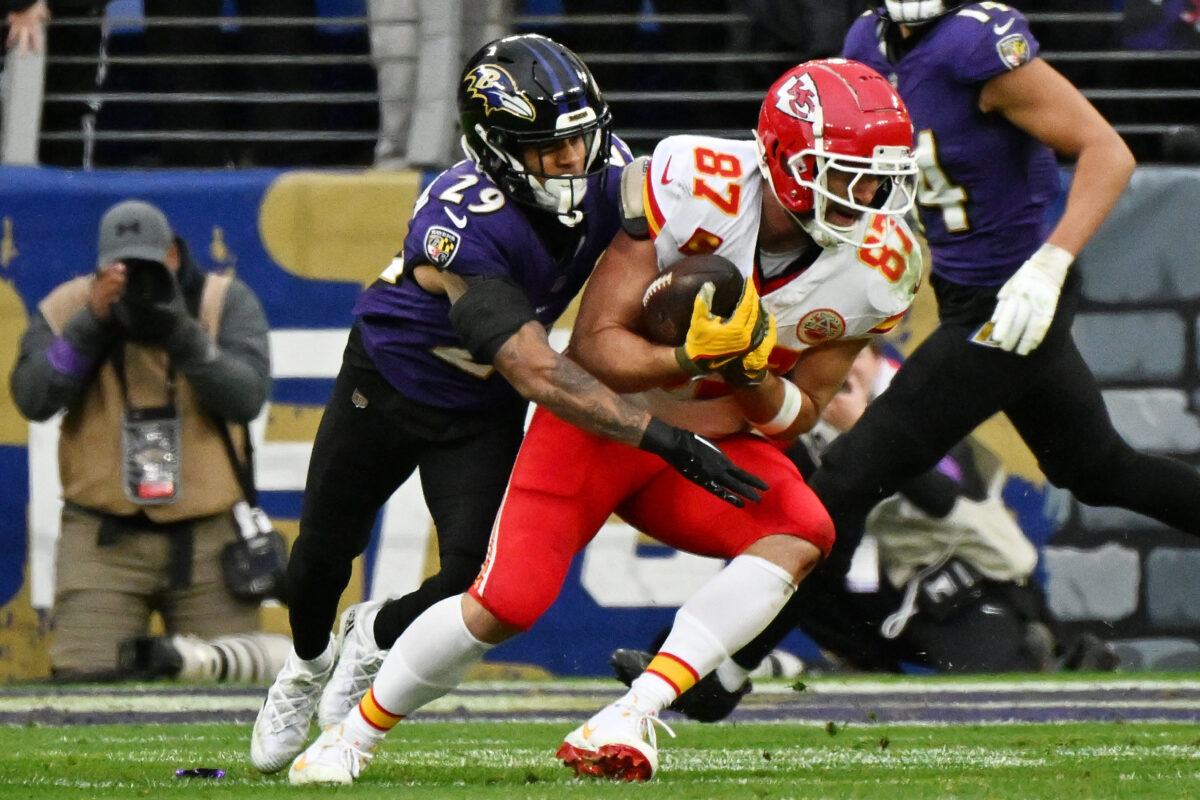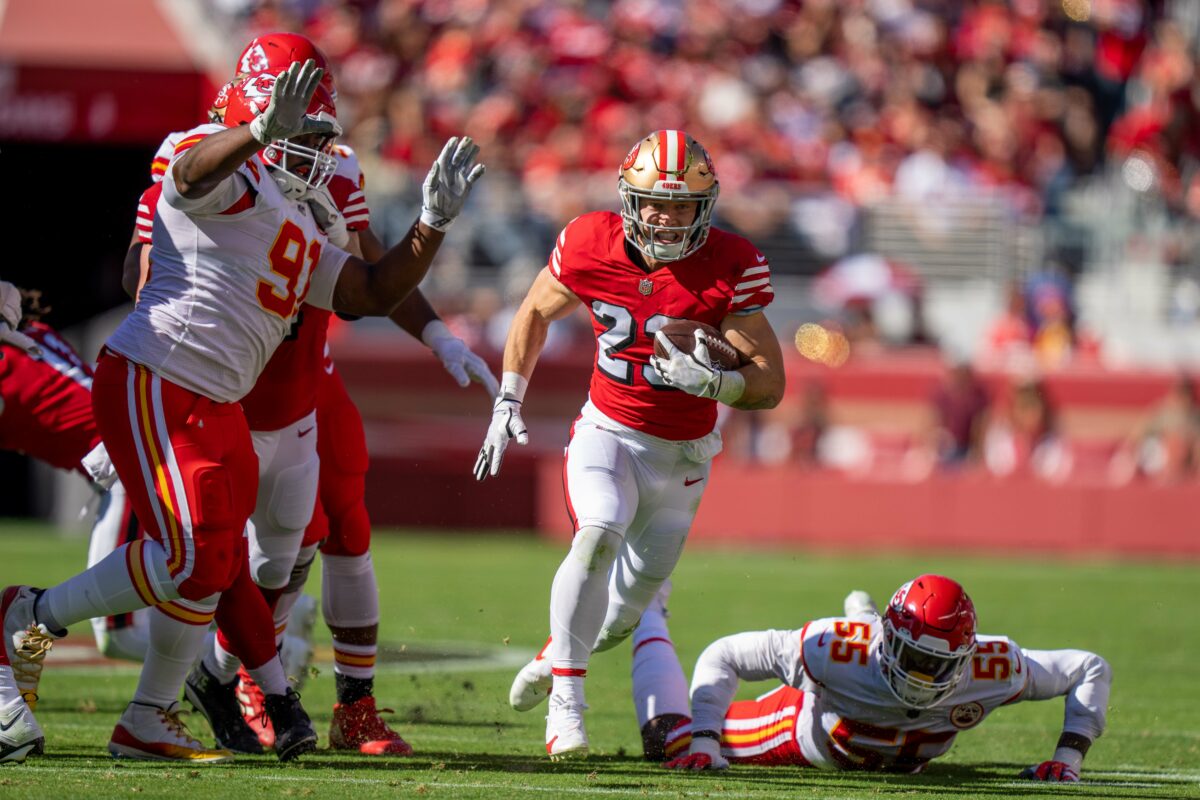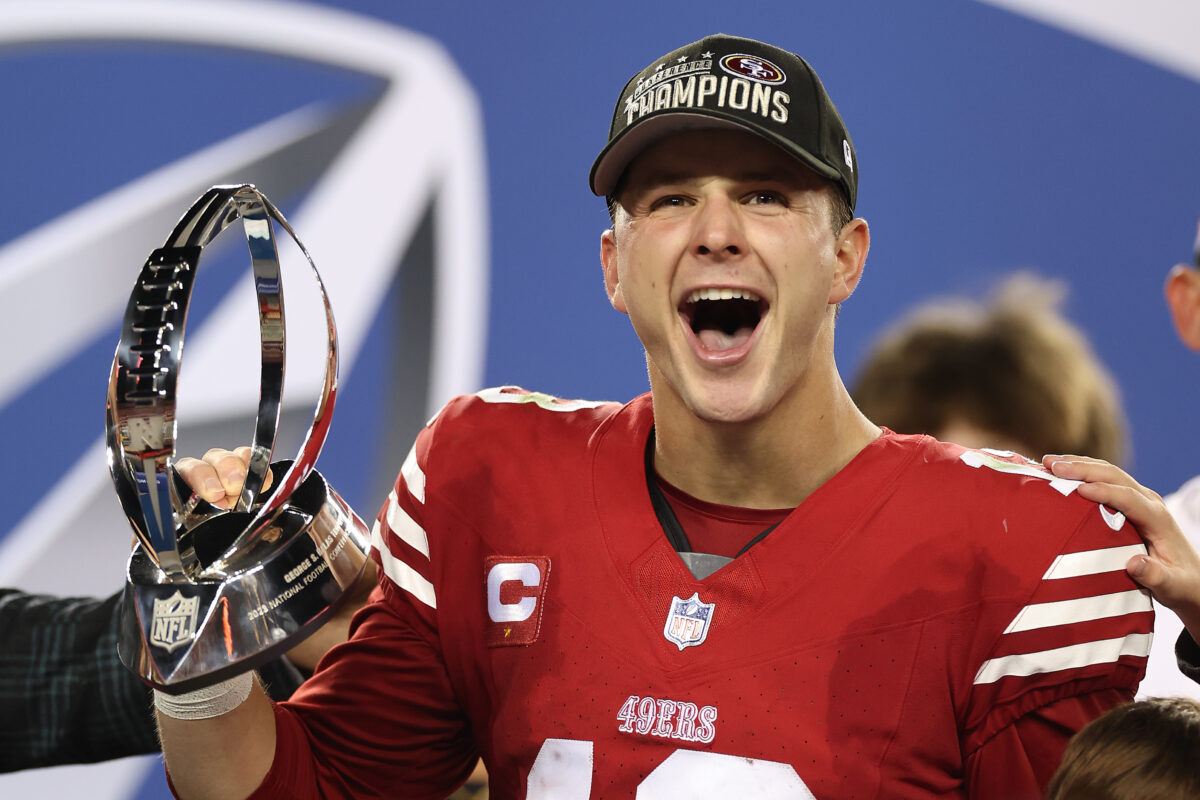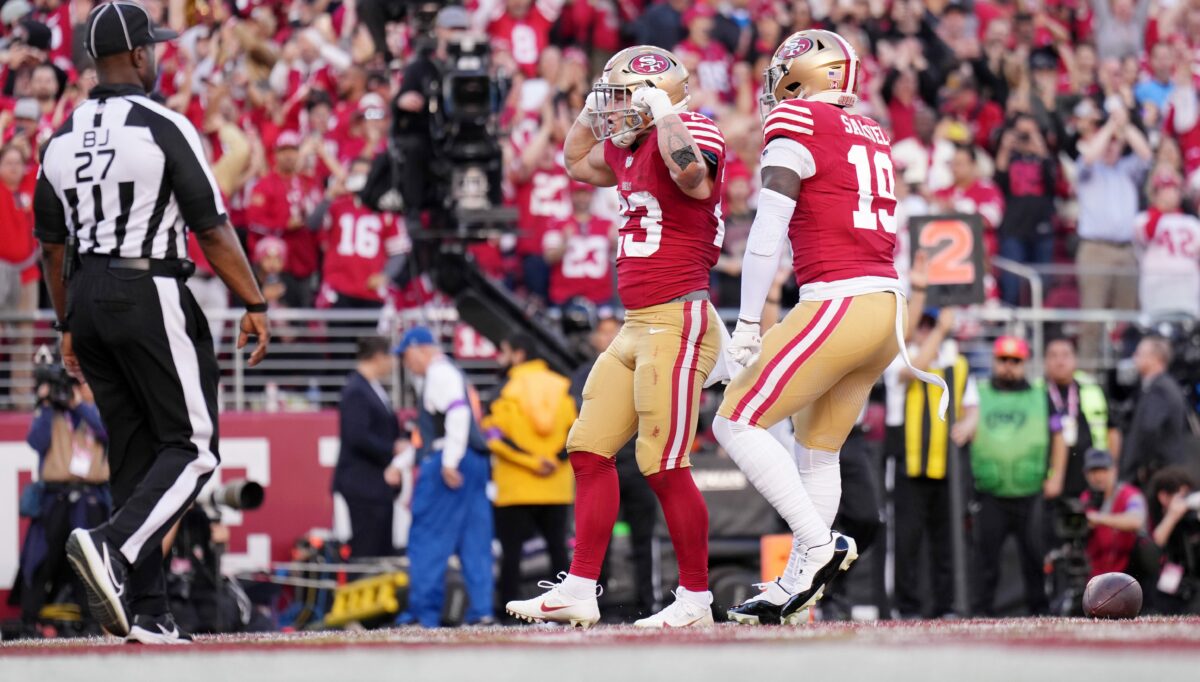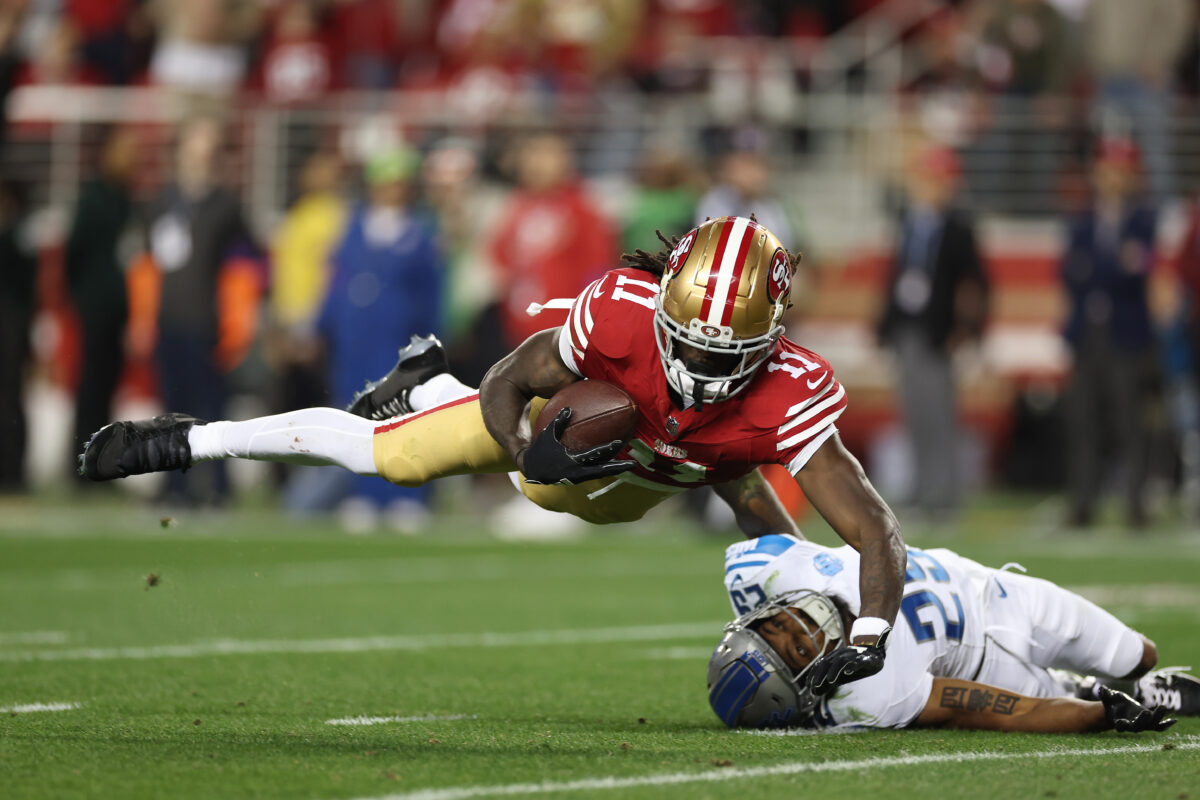LAS VEGAS — The Kansas City Chiefs’ offense hasn’t been aligned to its optimal outcome all season long, but one thing that’s worked all the way is their 3×1 receiver alignments. Patrick Mahomes is brilliant at reading defenders put in conflict with the route concepts out of trips and bunch sets. This season, including the playoffs, Mahomes has 28 explosive passes out of 3×1 sets, averaging 31.4 yards per play, and 4.8 yards of separation per play to the intended receiver. No matter the coverage or pressure, the Chiefs create all kinds of havoc in those 3×1 sets.
Those results are further magnified when the call is to send a back or a fourth receiver into the area where the three bunched receivers are. Then, opposing defenses are dealing with Andy Reid’s “four-strong” concepts, and the numbers game rarely, if ever, favors the defense.
[gambcom-standard rankid=”3011″ ]
For examples, let’s begin with Mahomes’ 21-yard completion to Travis Kelce with 43 seconds left in the first half of the AFC Championship game against the Baltimore Ravens. This was against Cover-3, with linebacker Roquan Smith dropping from a nose-shade alignment to bump Justin Watson on his post. Cornerback Ronald Darby bailed Marquez Valdes-Scantling outside, and that left Kyle Hamilton as the unfortunate guy to deal with the negative effects of the four-on-three advantage in the Chiefs’ favor. Hamilton’s focus was split between Clyde Edwards-Helaire’s flat route, and Travis Kelce’s corner route. When Hamilton bit on Edwards-Helaire underneath, Mahomes had the easy completion to Kelce up top.
The Chiefs have used four-strong concepts all season long to put defenders in conflict. It's especially effective against two-deep stuff, but here, they got the Ravens betwixt and between in Cover-3. Kyle Hamilton was in a very bad situation here. pic.twitter.com/lOTOsIYivc
— Doug Farrar ✍ (@NFL_DougFarrar) February 5, 2024
The Chiefs aren’t just about getting to four-strong from one side, through — they can also motion and roll into it in other ways. On this 45-yard pass from Mahomes to receiver Richie James against the Las Vegas Raiders in Week 16, James and Travis Kelce ran matching 15-yard in-cuts, Marquez Valdes-Scantling ran a vertical route up the mean, and Rashee Rice worked the shallow cross from left to right. Rice occupied linebacker Robert Spillane and slot defender Nate Hobbs in the Raiders’ Cover-4, while Kelce took cornerback Amik Robertson and safety Trevon Moehrig over the top. With all that clearance, it was James against cornerback Jonathan Jones outside right. Jones was playing bail coverage to the boundary, and he kept going vertical when James cut inside, and he had a cow pasture of open field after the catch.
This is a great way to work into a Dagger concept against two-deep coverage.
This 27-yard pass to Justin Watson against the Denver Broncos in Week 8 was four-strong with yet another different flavor — and another way to defeat two-deep coverage. Here, the Chiefs were in a 3×1 set with Watson motioning to trips right. That motion put Denver’s Cover-2 coverage in a problem spot, with Watson getting wiiiiiiide open on the corner route. Cornerback Damarri Mathis probably would have preferred that Watson stay outside. Mahomes could have also hit Jerick McKinnon on the release route from the backfield for a big gain.
It’s really tough to beat four-strong, but 49ers defensive coordinator Steve Wilks is aware of the challenge, and he has a few ideas. For one thing, you can sit in zones and wait for Mahomes to pick you apart by reading the defender in conflict as he did with Kyle Hamilton. That’s one example of those ad-lib routes Kelce and Mahomes do so well because their communication is just about psychic at this point. Then, as Wilks said last week, you’ve got to keep your guys on their guys.
“We still have to have a great plan. We’ve still got to execute and finish. When they start to ad-lib we’ve got to do a great job of really plastering the man within our zone and really straining to make sure we finish the rep.”
Easier in theory than in practice, and don’t be surprised if, in the most important game of the year, Andy Reid busts out four-strong in more ways than one.
